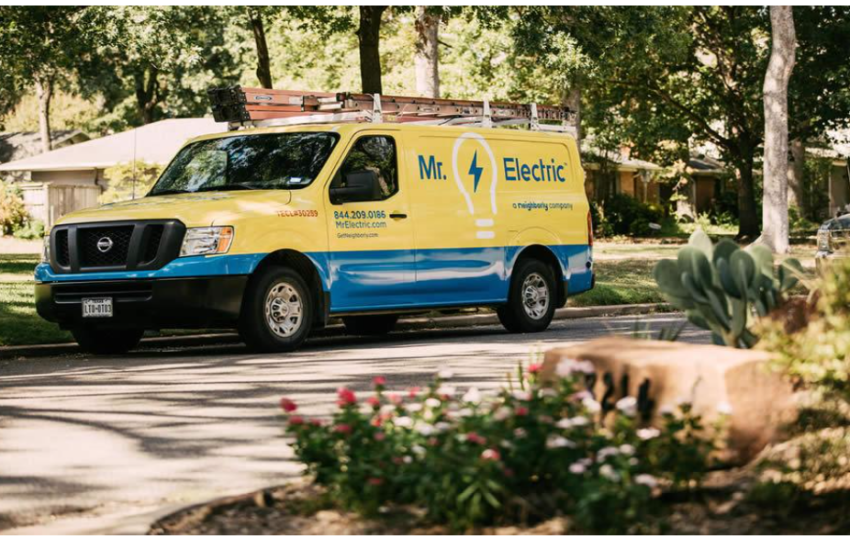7 Ways To Make Your Home More Energy Efficient
Every single choice of ours has the potential to impact our lives greatly. One such choice is making efforts to make our homes more energy efficient. It is not just about individual benefits anymore; we have a larger, collective responsibility towards our environment and society. Energy-efficient practices are that reduce energy consumption in your home through various means.
So below are six practical and downright awesome ways to transform your humble abode into an energy-saving paradise. We’re discussing simple yet impactful changes that will benefit you and Mother Nature.
- Optimize Insulation
The secret to building an energy-efficient house is proper insulation, even if you live in a place with a mild climate like Colorado Springs. Poor insulation can cause substantial heat gain in the summer and significant heat loss in the winter, resulting in excessive energy use for heating and cooling. Start by inspecting your attic, walls, and floors for insulation gaps or insufficient coverage. Seal any leaks and consider adding insulation materials such as fiberglass or cellulose to improve thermal efficiency. Insulating your water heater and pipes can also reduce heat loss and save energy.
Remember that good insulation protects your house from temperature extremes and minimizes the need for HVAC systems. You’ll notice significant energy bill savings in addition to a more comfortable living environment.
- Upgrade to Energy-Efficient Windows
Windows play a crucial role in energy efficiency. Old or poorly insulated windows allow heat to escape during winter and enter during summer, increasing the strain on your HVAC system. Good insulation is vital if you live in a city like Colorado Springs, where winters are cold and snowy, and summer temperatures sometimes cross 90 Fahrenheit. Consider upgrading to energy-efficient windows with double or triple glazing, low-emissivity coatings, and insulated frames. To do so, look up ‘Colorado Springs window installation company near me‘ to get the best possible option to get you started.
These windows are designed to minimize heat transfer, keeping your home comfortable year-round and reducing your reliance on heating and cooling systems. Special coatings on energy-efficient windows offer protection to your rugs, carpets, wood, fabrics, art, and furniture from harmful UV rays.
- Invest in Energy Star Appliances
Household appliances are major contributors to energy consumption. When shopping for new appliances, look for the Energy Star label, which indicates superior energy efficiency. Appliances with this label have been rigorously tested and meet or exceed strict energy efficiency standards set by the Environmental Protection Agency (EPA) in collaboration with the Department of Energy (DOE). By choosing ENERGY STAR, A typical home can reduce its annual energy costs by roughly $450 while still receiving the same quality and performance.
These appliances not only save energy while they are being used but also in standby or idle mode. This power-saving feature increases their efficiency. Energy Star appliances are made to last and have better construction and higher-quality parts. A longer lifespan and less frequent replacements may result from its energy-efficient design. Selecting Energy Star appliances is a long-term investment that can bring about long-term financial and environmental benefits.
- Look out for phantom energy consumption
Connect electrical devices and countertop appliances to a power bar, then set the bar to turn off at night. Keep in mind that electronics like televisions, cable boxes, and gaming consoles consume energy even when not in use. It is simple to turn them off before everyone goes to bed because they are all connected to a single power bar.
Plugged-in chargers use electricity even when no device is connected to them. Remember to unplug your phones, tablets, and other electronics once they are fully charged because they will continue to use power if you don’t.
- Use Energy-Efficient Lighting
Although lighting consumes a lot of energy, there are techniques to improve its effectiveness. Traditional incandescent lights waste a lot of energy, producing a lot of heat and requiring more power. The solution? Switch to energy-efficient alternatives like LED bulbs. LED bulbs consume significantly less energy, last longer, and emit less heat. They can use up to 80% less energy while providing the same brightness, resulting in lower energy bills and reduced environmental impact. With their long lifespan, LED bulbs save you money by reducing the frequency of replacements.
Installing motion sensors or timers for outdoor lighting ensures lights are only activated when needed, preventing unnecessary energy usage during idle periods. It’s important to note that LED technology has evolved to cover various lighting fixtures, so you can find LED alternatives for most types of lighting in your home, such as bathrooms, chandeliers, lamps, pathways lights, etc.
- Install Programmable Thermostats
The amount of energy you use for heating and cooling can be substantial. Installing programmable thermostats allows you to create personalized schedules based on your lifestyle and occupancy patterns. Set greater temps when you are at home and lower temperatures at night or while you are abroad. Some thermostats even allow you to set different temperature zones for specific areas of your home, ensuring comfort where and when needed.
Now let’s imagine that you just finished a long day at work and are looking forward to entering the warmth of your house. But the moment you enter, you are blasted with a chill. Not quite the friendly greeting you were looking for, is it? That’s when programmable thermostats’ temperature recovery feature is useful. These gadgets can calculate and learn your preferences, guaranteeing that your home is at the ideal temperature precisely when you need it rather than maintaining a consistent temperature throughout the day.
- Utilize Natural Light and Ventilation
Make the most of natural light by opening curtains and blinds during the day. This reduces the need for artificial lighting and saves energy. Similarly, use natural ventilation whenever possible by opening windows and allowing fresh air to circulate, reducing reliance on air conditioning systems.
Install window coverings, such as blinds or shades, to block out excessive sunlight during the warmer months, reducing the need for cooling. Another option to reduce heat gain from sunlight is to apply reflective window films. These films limit the amount of heat entering your home while still allowing natural light to pass through.
Conclusion
With environmental degradation on the rise, we must understand that human lifestyle is one of its major contributors. By adopting energy-efficient practices, you can become a supporter of a greener future and set an example for others to follow. To continually improve the performance of your house, keep an eye out for any new trends regarding energy consumption and saving practices. Just remember that every little amount counts and that by banding together, we can help in preserving our planet for future generations.


